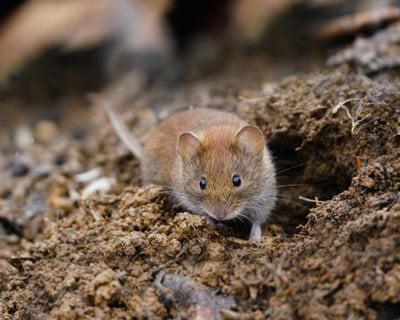Relied On Vole Control in Utah: Solutions for Your Property
Relied On Vole Control in Utah: Solutions for Your Property
Blog Article
Comprehensive Overview to Efficient Vole Insect Control: Invasion Recognition and Treatment Techniques
In the world of efficient insect control, vole infestations position a special obstacle that demands a strategic approach. By checking out the subtleties of vole behavior, recognizing key signs of invasion, and reviewing a range of control choices, one can establish a thorough strategy to fight these elusive bugs.
Recognizing Vole Actions
Vole behavior is defined by their tunneling routines and quick recreation rates, making them a challenging insect to manage properly. These small rodents normally develop intricate tunnel systems underground, using them for shelter, food storage, and transport. Voles are herbivores, consuming a variety of plants, light bulbs, origins, and turfs, which can create considerable damages to gardens, orchards, and yards. Their fast reproductive price additional makes complex control initiatives, with females qualified of creating multiple clutters in a single year, each consisting of several offspring.
Recognizing vole habits is important for effective bug control techniques. By recognizing their burrow places, monitoring feeding areas, and implementing targeted control techniques, such as capturing or environment adjustment, vole invasions can be managed efficiently.
Indications of Vole Problem

Avoidance Strategies
Applying efficient prevention methods is vital in minimizing vole invasions and guarding vegetation from their harmful feeding behaviors. To prevent vole invasions, it is crucial to start by getting rid of potential food sources and shelter.
Routinely evaluating the building for indicators of vole task, such as paths and tunnel openings, is essential for very early discovery and prompt activity. If vole task is believed, take into consideration using traps or repellents purposefully positioned near their paths.
Non-Lethal Control Methods
To successfully manage vole populaces while prioritizing gentle methods, non-lethal control methods offer sensible options for lowering vole damages in gardens and landscapes. One effective technique is the use of physical barriers such as equipment towel or cable mesh to safeguard at risk plants. These obstacles can be hidden at least 12 inches bent and deep at a 90-degree angle to avoid voles from burrowing beneath. Additionally, environment modification can deter voles by reducing their favored food sources and hiding spots. Keeping a well-mowed grass, getting rid of particles, and maintaining plants trimmed can make the setting less appealing to voles.

Lethal Control Options
One effective approach for resolving vole invasions in landscapes and yards involves the tactical usage of lethal control choices. When confronted with a severe vole problem that non-lethal approaches have actually stopped working to contain, implementing dangerous control measures ends up being essential. One typically employed dangerous control alternative is using snap traps. These traps are developed to promptly and humanely eliminate voles upon activation, making them a popular choice for numerous garden enthusiasts and landscapers. To raise the efficiency of breeze traps, it is suggested to position them in areas where vole activity is high, such as along runways or near burrow entryways. One more deadly control choice is the utilization of hazardous baits particularly developed to target voles. These baits include poison that is ingested by the voles, resulting in their eventual demise. However, caution must be worked out when making use of poisonous lures to avoid injury to non-target animals or family pets. On the whole, when using deadly control choices, it is essential to do so sensibly and according to regional policies to efficiently handle vole infestations.
Conclusion
In verdict, effective vole bug control needs a comprehensive understanding of vole habits, recognition of indications of invasion, execution of prevention approaches, and usage of both dangerous and non-lethal control techniques. By incorporating these methods, people can efficiently take care of vole populations and protect their residential or commercial see this website property from damages. It is essential to attend to vole infestations promptly to avoid additional problems and lessen the influence on the surrounding atmosphere.
Given the detailed tunnel systems and rapid reproduction rates particular of voles, identifying the indicators of vole invasion ends up being essential in effective insect control. One of the key indicators of vole existence is the visibility of surface paths or tracks in turf or snow, commonly about 1-2 inches wide, produced as voles take a trip between their burrows and food resources.To successfully take care of vole populations while prioritizing gentle approaches, non-lethal control approaches use sensible services for decreasing vole damage in yards and landscapes.One effective method for addressing vole problems in landscapes and gardens involves the strategic usage of deadly control choices. vole control utah.In conclusion, effective vole parasite control requires a detailed understanding of vole actions, recognition of indications of infestation, execution of prevention strategies, and application of both deadly and non-lethal control methods
Report this page